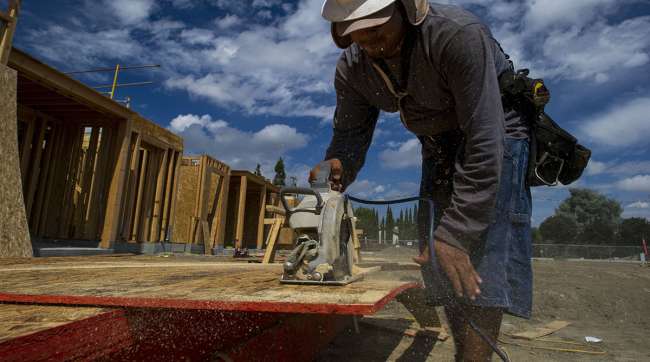Single-Family Housing Starts Rise to Highest in a Decade

Groundbreaking on single-family homes proceeded in November at the strongest pace in a decade, driving U.S. housing starts to a faster-than-estimated rate, government figures showed Dec. 19.
Highlights of Housing Starts for November
• Residential starts rose 3.3% to 1.3 million annualized rate (estimated 1.25 million) after 1.26 million pace in prior month (revised from 1.29 million)
• Single-family starts jumped 5.3% to 930,000, highest since Sept. 2007; South and West regions also were 10-year highs
• Permits, a proxy for future construction of all types of homes, fell 1.4% to 1.3 million rate (est. 1.27 million) from 1.32 million pace; single-family permits in U.S. and South both highest since Aug. 2007
Key Takeaways
The latest results make it more likely that residential construction spending — which subtracted from economic growth in the second and third quarters — will add to the pace of U.S. expansion in the October-December period, which is already shaping up as a solid quarter.
The November gains are encouraging because they’re driven by single-family home building, which tends to spur economic activity and jobs in a bigger way than apartment construction.
Single-family permits have increased for three straight months, also indicating a sustained pipeline of work for developers.
The figures reflect a boost from rebuilding and recovery efforts following hurricanes Harvey and Irma, as areas in the South had faced the brunt of the damage from flooding and winds.
A separate report on Monday showed homebuilders’ confidence jumped in December to the highest level since July 1999, indicating developers expect demand to advance amid steady economic growth, a tightening job market and still-low mortgage costs. At the same time, further gains in homebuilding may run up against hurdles including a shortage of workers, rising costs for materials and a scarcity of ready-to-build lots.
Other Details
•Groundbreaking on multi-family homes, such as apartment buildings and condominiums, fell 1.6% to an annual rate of 367,000; data on these projects can be volatile
•Housing starts plunged 40% in Northeast to 87,000, biggest drop in a year; down 13% in Midwest.
•Report shows wide margin of error, with a 90% chance that the November figure on housing starts was between a 5.8% drop and 12.4% gain.
•Housing units authorized but not yet started reached 155,000, the most since June 2008; homes under construction increased to 1.11 million, most since August 2007.
•Report released jointly by the Census Bureau and Department of Housing and Urban Development in Washington.
With assistance by Chris Middleton




